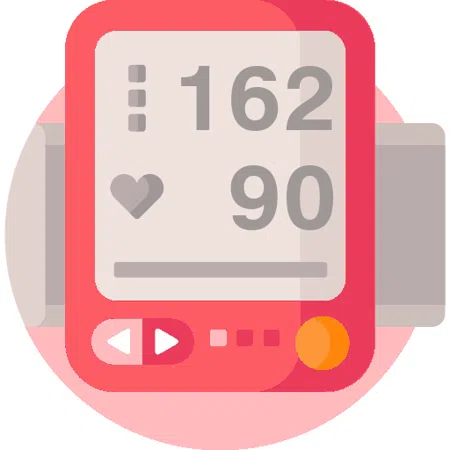Table for blood pressure values of 162 over 90 mmHg
Blood pressure numbers are generally divided into categories according to the following table.
The given numbers of 162 over 90 mmHg are highlighted in color and result in Medium Hypertension (Stage 2).
| Category | systolic (mmHg) | diastolic (mmHg) |
|---|---|---|
| Low Blood Pressure (Hypotension) | < 99 | < 59 |
| Optimal Blood Pressure | 100 - 119 | 60 - 79 |
| Normal Blood Pressure | 120 - 129 | 80 - 84 |
| High-Normal Blood Pressure | 130 - 139 | 85 - 89 |
| Mild Hypertension (Stage 1) | 140 - 159 | 90 - 99 |
| Medium Hypertension (Stage 2) | 160 - 179 | 100 - 109 |
| Hypertensive Crisis (Stage 3) | > 180 | > 110 |
Low blood pressure
In case of low blood pressure numbers (Hypotension), direct health risks are normally not to be expected, but the following symptoms can occur:
- Circulatory problems, dizziness, collapse or fainting spells
- Reduced ability to concentrate
- Fatigue
- Cold hands and feet
Normal blood pressure
Within the categories optimal/normal/high-normal, usually blood pressure can be considered harmless. However, if the numbers are in the upper range of these categories, you should be careful to avoid an increase to hypertension numbers.
Regular measurements of blood pressure at home or regular medical examinations by a doctor are therefore a good preventive measure, even if the numbers seem to be normal.
Hypertension
At numbers of 140 to 90 mmHg and above, high blood pressure (Hypertension) is usually diagnosed. This does not necessarily mean that medication is needed, but there is an increased risk of health impairments.
Even if you feel healthy and comfortable with high blood pressure numbers, it is definitely recommended to talk to a doctor. If high blood pressure is left untreated, there is a risk of serious illnesses, including strokes and heart attacks.
What is blood pressure and why is this important?
Blood is pumped through our bloodstream by the heart. This creates pressure on the vessel walls. If the arteries are elastic, this pressure can be cushioned well.
With age, the elasticity of the blood vessels decreases. Their ability to expand is reduced and your blood pressure will rise. This can lead to an increased risk of cardiovascular diseases. It can even lead to a heart attack or a stroke.
Learn more